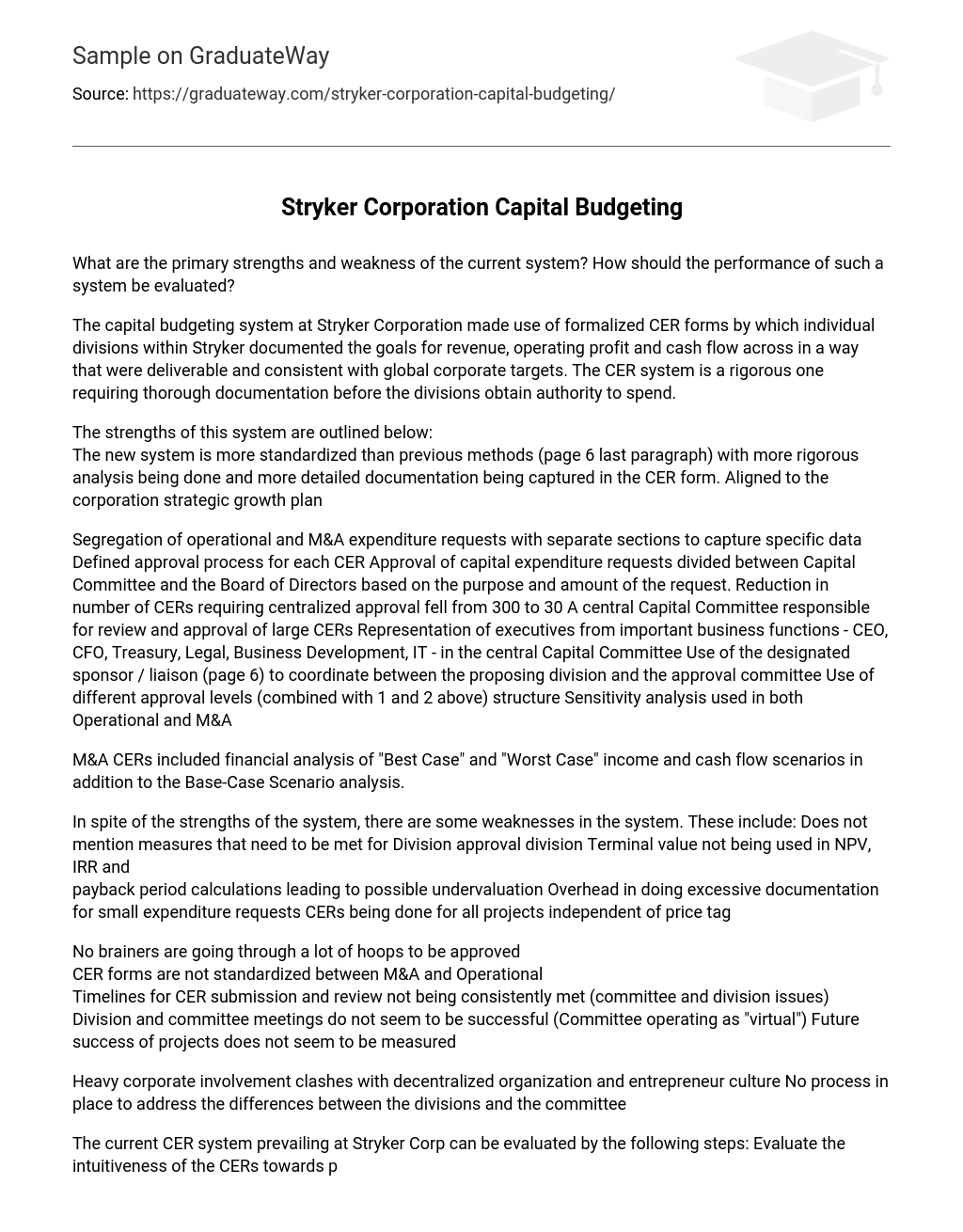What are the primary strengths and weakness of the current system? How should the performance of such a system be evaluated?
The capital budgeting system at Stryker Corporation made use of formalized CER forms by which individual divisions within Stryker documented the goals for revenue, operating profit and cash flow across in a way that were deliverable and consistent with global corporate targets. The CER system is a rigorous one requiring thorough documentation before the divisions obtain authority to spend.
The strengths of this system are outlined below:
The new system is more standardized than previous methods (page 6 last paragraph) with more rigorous analysis being done and more detailed documentation being captured in the CER form. Aligned to the corporation strategic growth plan
Segregation of operational and M&A expenditure requests with separate sections to capture specific data Defined approval process for each CER Approval of capital expenditure requests divided between Capital Committee and the Board of Directors based on the purpose and amount of the request. Reduction in number of CERs requiring centralized approval fell from 300 to 30 A central Capital Committee responsible for review and approval of large CERs Representation of executives from important business functions – CEO, CFO, Treasury, Legal, Business Development, IT – in the central Capital Committee Use of the designated sponsor / liaison (page 6) to coordinate between the proposing division and the approval committee Use of different approval levels (combined with 1 and 2 above) structure Sensitivity analysis used in both Operational and M&A
M&A CERs included financial analysis of “Best Case” and “Worst Case” income and cash flow scenarios in addition to the Base-Case Scenario analysis.
In spite of the strengths of the system, there are some weaknesses in the system. These include: Does not mention measures that need to be met for Division approval division Terminal value not being used in NPV, IRR and
payback period calculations leading to possible undervaluation Overhead in doing excessive documentation for small expenditure requests CERs being done for all projects independent of price tag
No brainers are going through a lot of hoops to be approved
CER forms are not standardized between M&A and Operational
Timelines for CER submission and review not being consistently met (committee and division issues) Division and committee meetings do not seem to be successful (Committee operating as “virtual”) Future success of projects does not seem to be measured
Heavy corporate involvement clashes with decentralized organization and entrepreneur culture No process in place to address the differences between the divisions and the committee
The current CER system prevailing at Stryker Corp can be evaluated by the following steps: Evaluate the intuitiveness of the CERs towards project completion in: NPV, IRR and Payback calculations (without Terminal value)
actual cash flows within and after the 5-7 year period
project timelines
risks identified and corresponding sensitivity analyses
Evaluate the benefit of detailed documentation on the CER forms for small projects checking if small CERs that are similar in nature can be merged addressing team-coordination issues of current system (issues between divisions and committee) MoMs of review meetings
Laydown plan for CER as soon as it is raised
frequent reviews of CERs that are completed, in execution and planned.





